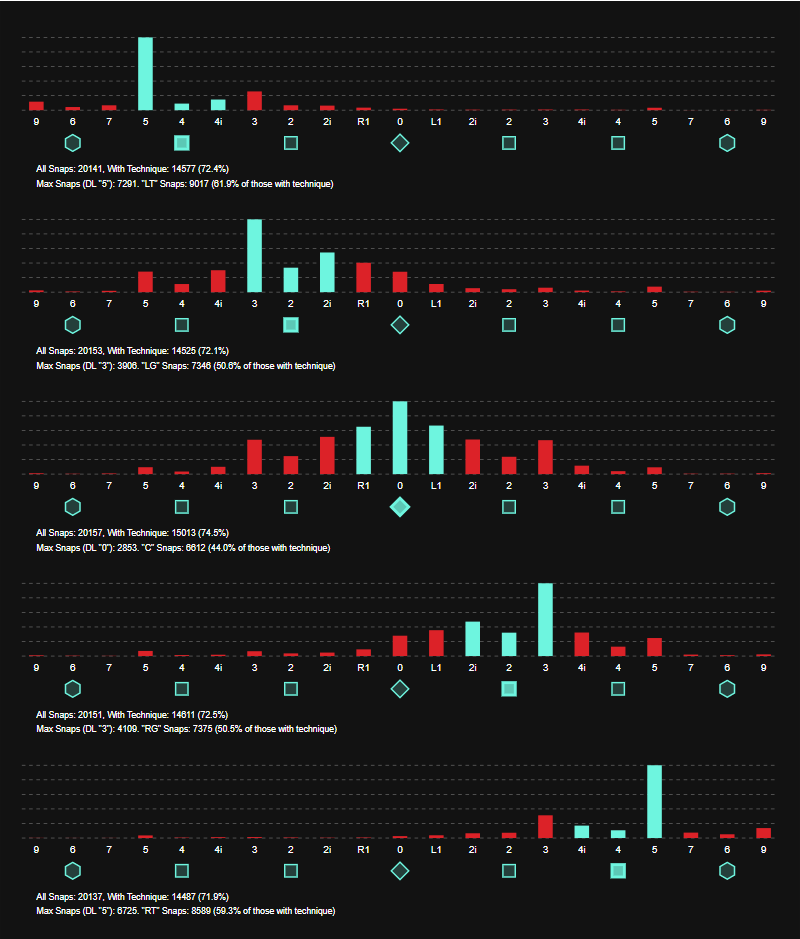Raise your hand if you’ve heard a broadcaster refer to the mystical “analytics” during a broadcast. Keep your hand raised if you’ve heard the even more confusing singular form “analytic”. Last one I promise, keep your hand raised if it seemed the broadcaster didn’t seem to have a good understanding of the “analytics” they were referring to?
If one were into this sort of thing, and were looking for a cheap buzz while watching some Wednesday night MACtion for instance, it could even get turned into a drinking game! “The analytics say to go for it here” ... "This coach has said he’s not a fan of analytics, and prefers to go with his gut” ... "Where does this analytic fit into the bigger picture of analytics?”
In game analytics is here to stay in football. 4th down decision making, going for 2 when down 8, and incorporating play-action more in the pass game are just a few examples that have become commonly accepted practice. These are easy adoptions that have made their way into most football teams. It has been great to see teams make better informed decisions on game day. An area that is trickier to see on game day is how teams utilize analytics either during practice, or to make practices better.
Offensive Line Play
Many have probably seen the viral TikTok videos of offensive lineman kick stepping to a sped up version of Treasure by Bruno Mars. Outstanding choreography aside, these videos show something that offensive lineman practice every day, kick stepping. Kick stepping is the lifeblood of a good pass protection set. It is how an offensive lineman gets into position to block a defensive lineman. But, not all kick steps are equal. Centers will use a different set than guards, who in turn set differently than tackles. What angles should the offensive lineman set at during practice to prepare for games?

The above chart shows each position on the offensive line. Left tackle at the top, then left guard, center, right guard, and finishing up with right tackle at the bottom. The red and blue bars are located above all of the defensive line positions. From a wide 9 on the left, to a wide 9 on the right. The height of the bar is indicative of how often the offensive player blocks that defensive line position. For example, the left and right tackles most commonly block a 5 technique, by a large margin. Let’s talk about how you could use this data in practice!
Tackles
As mentioned above, tackles are most likely to block outside rushers. They should work predominantly on setting outside. The next most common defensive line technique blocked by tackles is a 3 technique. Most likely this happens on some sort of twist or stunt (this can / and should be confirmed by film study before applying this to practice). Time should be spent practicing kick stepping outside, and then resetting back to the inside when the twist or stunt happens to pick up the looping (or penetrating) 3 technique.
Guards
Guards have a bigger distribution of who they block than the tackles. Time must be spent kick stepping to block 3 techniques, but also need to practice looking to the inside. Guards need to be able to pull and block people on the other side of the line as well. Time must be spent practicing that as well.
Centers
Centers have an even bigger distribution still! Mainly blocking either a head up nose, or 1 technique. Their distribution is even side to side, meaning they have to be able to move either direction with equal skill and ability. Adding this to the fact that they often are responsible for calling out protections, and making adjustments in the run game. It’s easy to see why center is one of the hardest positions to play on the football field.
Conclusion
This is an overall breakdown of all offensive lineman. But, this could be utilized each week during the season to see how opposing defenses rush the pocket. Looking at this same chart, but using only games of your opponents defense could help answer many questions. Which defender is each lineman most likely to be blocking? Should a coach practice different sets each week based on opponent rush tendencies? Analytics can help coaches as they plan how best to use the limited amount of time they have on the practice field with players.
Matthew Edwards
Head of American Football Analysis
@thecoachedwards

